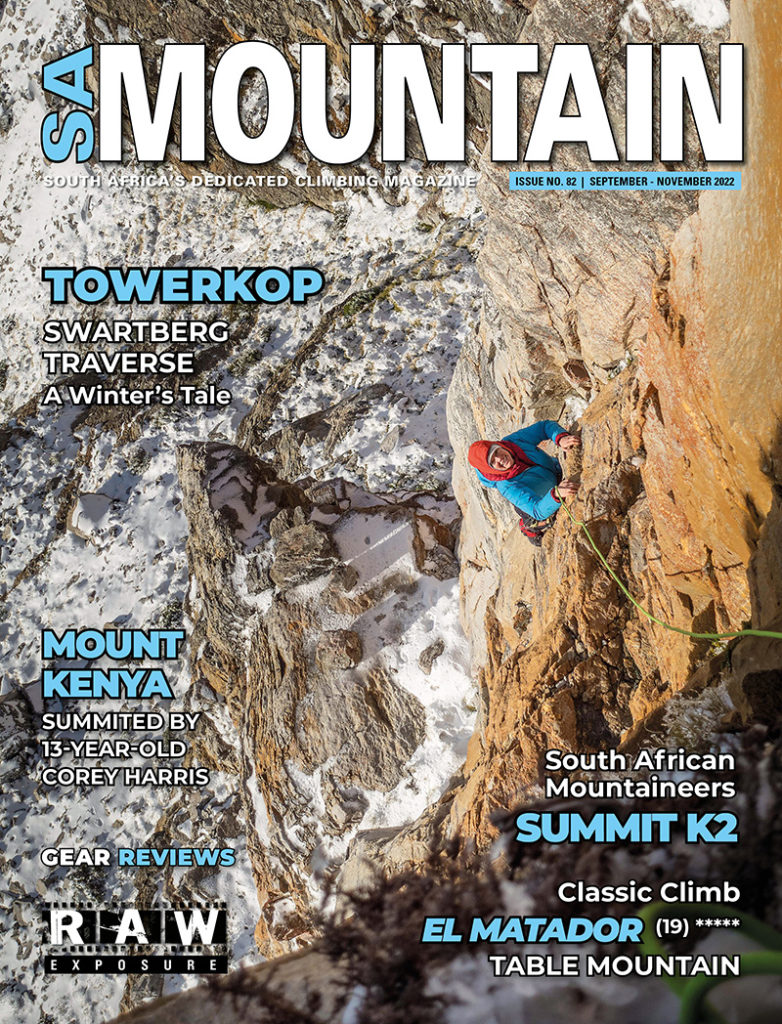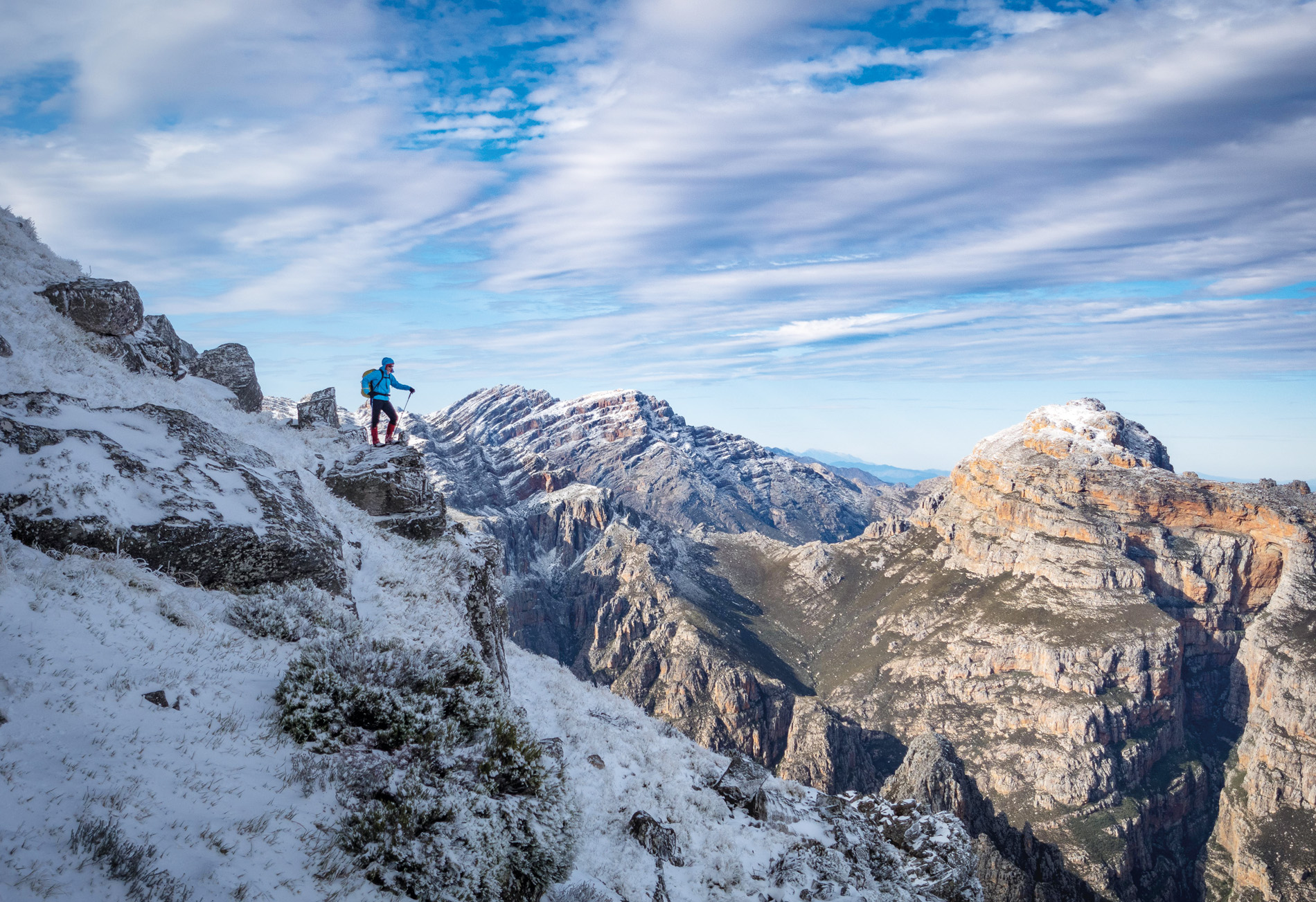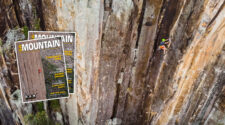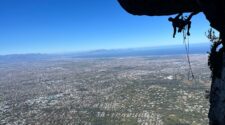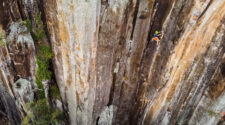Read the editorial and check out the contents of the latest issue.
With up-to-date news coverage, training articles, gear reviews, celebrity profiles, technical tips covering a wide variety of subjects, event reports, big glossy pics and enthralling articles.
Editorial
How safe do you want climbing to be?
Most of the climbing world is aware of the terrible and tragic accident that befell the 21-year-old New Zealand woman, Anna Parsons, in Yosemite National Park at the beginning of August this year.
Parsons and a friend arrived in The Valley to do some climbing before heading off to Canada. They chose the notorious classic, Snake Dike, a relatively easy, but severely runout route up the slabby western flanks of Half Dome. The route has a reputation for its very runout nature and is revered by many for that very reason.
I’m not going to debate exactly what happened, but, in a nutshell, Anna took a 25-metre whipper down the steep slabs, sustaining very severe injuries, breaking many bones in her body, resulting in the amputation of one leg below the knee. And only escaping death because she was lucky enough to be wearing a helmet, which was completely destroyed. She is now in an American hospital facing multiple procedures and astronomical medical bills.
Social media went wild about this absolutely catastrophic accident, many sending love and get well soon wishes, etc. There was also the camp which became very vocal about ‘why is the route so dangerous?’, and ‘why can’t they add a few more bolts, which would have prevented such a heinous accident?’ And this is what I found strange, but at the same time I could understand the many vociferous comments made by, I’m assuming, mostly non-climbers and perhaps some climbers who do not fully understand the very essence of climbing.
Climbing is an extreme sport, yes, but we can also choose how extreme we would like our climbing to be. I often joke with clients who I am taking to the local sport crag for a spot of top roping, that the most dangerous part of their day is driving to the crag. They laugh of course, but it is absolutely true. Top-roping off solid bolted anchors is safer than taking your dog for a walk in the park.
The beauty and intrinsic nature of climbing and what it means to each individual is multi-faceted and very complex. It is above all a mental game, which only you have control over, and you, and only you can decide where on that vast ocean of risk you would like to place yourself. Of course, risk is a relative term. My personal acceptable risk can be someone else’s doddle, but it can also be the next person’s irrational fear. And that is what makes climbing so special. It is a mental game that you play with yourself, a lifestyle you have chosen, and it is up to you how you want to play it.
There are many climbs scattered all over the world that have a ‘reputation’. Some have scarier reputations than others. This can mean different things when it comes to the bigger mountains, but with rock climbing, it almost always comes down to protection – the amount of gear on a pitch and how spaced and/or sketchy that gear could be. And this is exactly where you make the decisions. Are you up to climbing a certain route? Physically? Or more importantly, mentally? More often than not, it is the mental aspect that steers climbers away. But, and this is the very epitome of climbing, if you decide to pit your skills against a particular route, one that is at your mental limit (or even a little beyond) and you work it, in whatever way you feel comfortable, and then you piece it together and keep your head cool, and eventually send it, the rewards are monumental.
Yes, Anna’s accident was simply horrible and not one of us like to hear of a fellow climber hurting themselves, or worse, but the right to risk must fall on the shoulders of the individual. There can never be a ‘policing’ of whether a route is safe or not. That would be beyond ludicrous and the sport of climbing that burns so fiercely in our souls, would lose all meaning.
Anna is a very lucky woman to have survived such a fall and there is a high probability that this may put her life on a different course, but only time and Anna’s inner strength can answer that question. But it would be interesting to get Anna’s opinion on whether climbs should be made safer, or brought down a level. I may be wrong, but somehow I think she would respect the fundamental essence of this game called climbing.
Be safe in the hills
Tony
Features
Towerkop and the Swartberg Traverse
A Winter’s Tale
by Garrreth Bird
Point Batian – Mount Kenya
Corey Harris became the youngest person to summit Batian in March 2022, aged 13
by Corey & Johnny Harris
South African mountaineers stand on the summit of K2
by John Black
Classic Climb: El Matador (19)***** Table Mountain
by Donovan Gould
Regulars
Raw Exposure
Gear Reviews
Competitions
Classifieds
Back Page Story
The Goldilocks Effect by Terence Livingston
